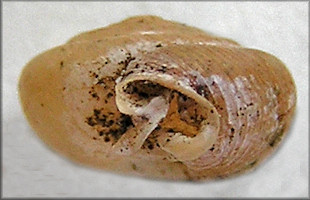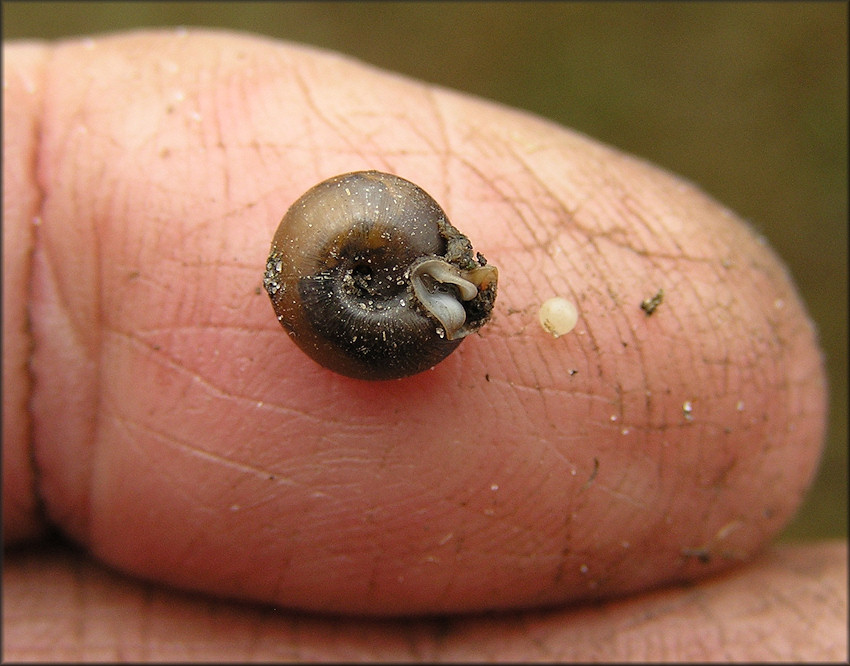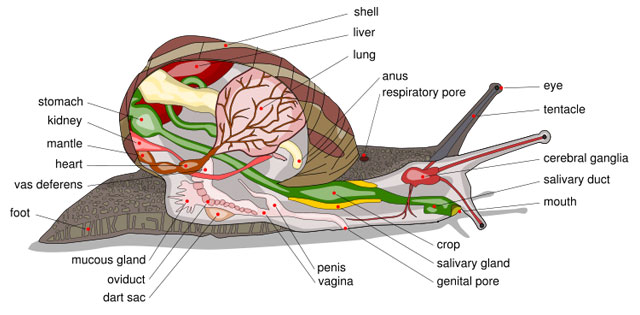Adaptation
Daedalochila hausmani has a brown shell that has 5 tightly coiled, depressed, and flattened whorls, has a lip, and ranges in size from 5-10 millimeters (Dourson, 2010). The shell surface is rib-striated with short deciduous hairs (Jackson, 1948). The growth lines of the shell are very prominent and are evenly spaced with a strong aperture lip that has two teeth (Burch, 1962). These teeth are used as a barrier to prevent Cychrine beetles from successfully attacking it and are also used in identifying this species (Dourson, 2010). Daedalochila hausmani's outer lip tooth is placed near the edge of the lip, while the outer part of the lip is bent sharply back in the middle (Jackson, 1948). The aperture also has oral obstructions (Jackson, 1948).
Author of image is Harry G. Lee. © Copyright Sheryl Pollock 2011
Author of image is Harry G. Lee.
Since there is not much information specifically on Daedalochila hausmani we can assume that it has similar features to the Polygyridae since it is one.
Like other Pulmonata, a subclass of the Gastropoda, Daedalochila hausmani, does not have a gill and has adapted its mantle cavity into a lung, allowing it to live on land (Burch, 1962). It has a radula that contains many teeth which can be used for feeding, scraping, piercing, and rasping (Boss, 1982). This structure is especially useful when Daedalochila hausmani is eating the fruiting bodies or mycelia of fungi (Perez, 2008). This species also has two pairs of retractable tentacles, one with eyes on the upper pair and the other used for other sensory input (Burch,1962).
Daedalochila hausmani, like other Gastropoda, have undergone torsion which is rotating the anus 180° so that the anus and mantle cavity open directly above the head and mouth (Morton et al., 1964). This adaptation allows only one opening into the shell and is most likely a protection mechanism. Also like other Gastropoda, it has a foot that is used for movement and as a holdfast (Morton et al., 1964). The foot uses muscular contractions to propel itself forward (Morton et al., 1964).
Image under GNU license.
Original author is Jeff Dahl.
Learn about nutrition.
Go back to home page.



